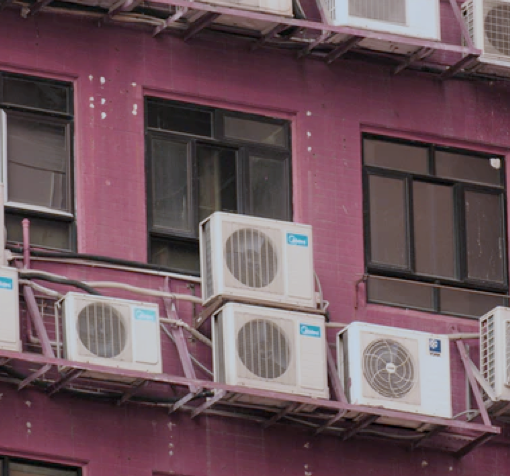Problem
Do you know that EPA studies found levels of about a dozen common organic pollutants to be 2 to 5 times higher inside homes than outside, even in cities where you wouldn’t expect it? Simply stated indoor air quality is the quality of air inside a building, frequently referred to as IAQ. Compounding the problem we are  spending more and more time indoors, up to 90 percent of our time, kids play with Xboxes instead of neighborhood baseball. So not only is our indoor air quality poor, but we also spend more time inside breathing the poor quality air. Why should you care? We all should, poor air quality contributes to respiratory infections, asthma and decreases your decision-making performance.
spending more and more time indoors, up to 90 percent of our time, kids play with Xboxes instead of neighborhood baseball. So not only is our indoor air quality poor, but we also spend more time inside breathing the poor quality air. Why should you care? We all should, poor air quality contributes to respiratory infections, asthma and decreases your decision-making performance.
Causes
We have spent years combating outdoor pollution from cars and factories ignoring our indoor air where we spend most of our time. Combustion, construction materials, people let’s not forget people, yes we sweat and breath giving off CO2, believe it or not even the air fresheners you use in your house contribute to poor IAQ. A term used to group toxic gases emitted is Volatile organic compounds (VOCs). Examples of VOCs include: paints and lacquers, paint strippers, cleaning supplies, pesticides, building materials and furnishings, office equipment such as copiers and printers, correction fluids and carbonless copy paper, graphics and craft materials including glues and adhesives and permanent markers. Building codes, updated to reduce energy use, cause tightness in a building or minimize the amount of outdoor air that can “leak” into and out of your home. Building tightness exasperates the indoor air quality by keeping the VOCs in your house. Windows are used less in homes as we rely more and more on HVAC technology to keep our houses comfortable. All of this leads to increased VOCs indoors and increased health problems.
Solutions
There are three ways to combat poor IAQ, filtration, ventilation and eliminate the source, you can use one or all of them it improve your air.
Filtration:
Filtration or air cleaners attempt to remove toxins from the air. Filtration is the least effective strategy to improve IAQ. The effectiveness of an air cleaner depends on how well it collects pollutants from indoor air (expressed as a percentage efficiency rate) and the volume air it draws through the cleaning or filtering element (expressed in cubic feet per minute). A very efficient collector with a low air-circulation rate will not be effective, nor will a cleaner with a high air-circulation rate but a less efficient collector. Another important factor in determining the effectiveness of an air cleaner is the strength of the pollutant source. Table-top air cleaners, in particular, may not remove satisfactory amounts of pollutants from strong nearby sources. People with sensitivity to particular sources may find that air cleaners are helpful only in conjunction with concerted efforts to remove the source. The equipment also must be maintained, typically changing air filters.
Scanning the internet there are many references to a NASA study that determined houseplants have been shown to reduce levels or filter some chemicals in laboratory experiments. Further studies conclude there is no evidence, however, that a reasonable number of houseplants remove significant quantities of pollutants in homes and offices. In fact indoor houseplants should not be over-watered because overly damp soil may promote the growth of microorganisms and mold adding to the IAQ problem.
Ventilation:
Another approach to lowering the concentrations of indoor air pollutants in your home is to increase the amount of outdoor air coming indoors. The concept is to flush toxins out or dilute the air to reduce the VOC levels. Building codes are being modified to require ventilation systems in many regions because of the tightness of new construction. The most basic way to ventilate your home is opening the windows. However this is often not practical when it is too hot or cold outside, you have security concerns or rain to mention a few. Most home heating and cooling systems, including forced air heating systems, do not mechanically bring fresh air into the house. Opening windows and doors, operating window or attic fans, when the weather permits, or running a window air conditioner with the vent control open increases the outdoor ventilation rate. Local bathroom or kitchen fans that exhaust outdoors remove contaminants directly from the room where the fan is located and also increase the outdoor air ventilation rate.
A new industry is growing up around ventilation. Advanced designs of new homes are starting to include mechanical ventilation systems that bring outdoor air into the home. Depending on climate some are using high tech gadgets like energy-efficient heat recovery ventilators (also known as air-to-air heat exchangers). Read the U.S. Department of Energy’s “Improving the Efficiency of Your Duct System” (PDF) for more information. Some contractors are questioning the logic behind the need and cost of sophisticated systems.
Eliminate the source:
Usually the most effective way to improve indoor air quality is to eliminate individual sources of pollution or to reduce their emissions. Some sources, like those that contain asbestos, can be sealed or enclosed; others, like gas stoves, can be adjusted to decrease the amount of emissions. In many cases, source control is also a more cost-efficient approach to protecting indoor air quality than increasing ventilation because increasing ventilation can increase energy costs. Specific sources of indoor air pollution in your home are listed later in this section.
It is particularly important to take as many of these steps as possible while you are involved in short-term activities that can generate high levels of pollutants — for example, painting, paint stripping, heating with kerosene heaters, cooking, or engaging in maintenance and hobby activities such as welding, soldering, or sanding. You might also choose to do some of these activities outdoors.
The key is to be aware of indoor air quality, of its cause, effects and solutions. Then apply the best solutions for your environment.



